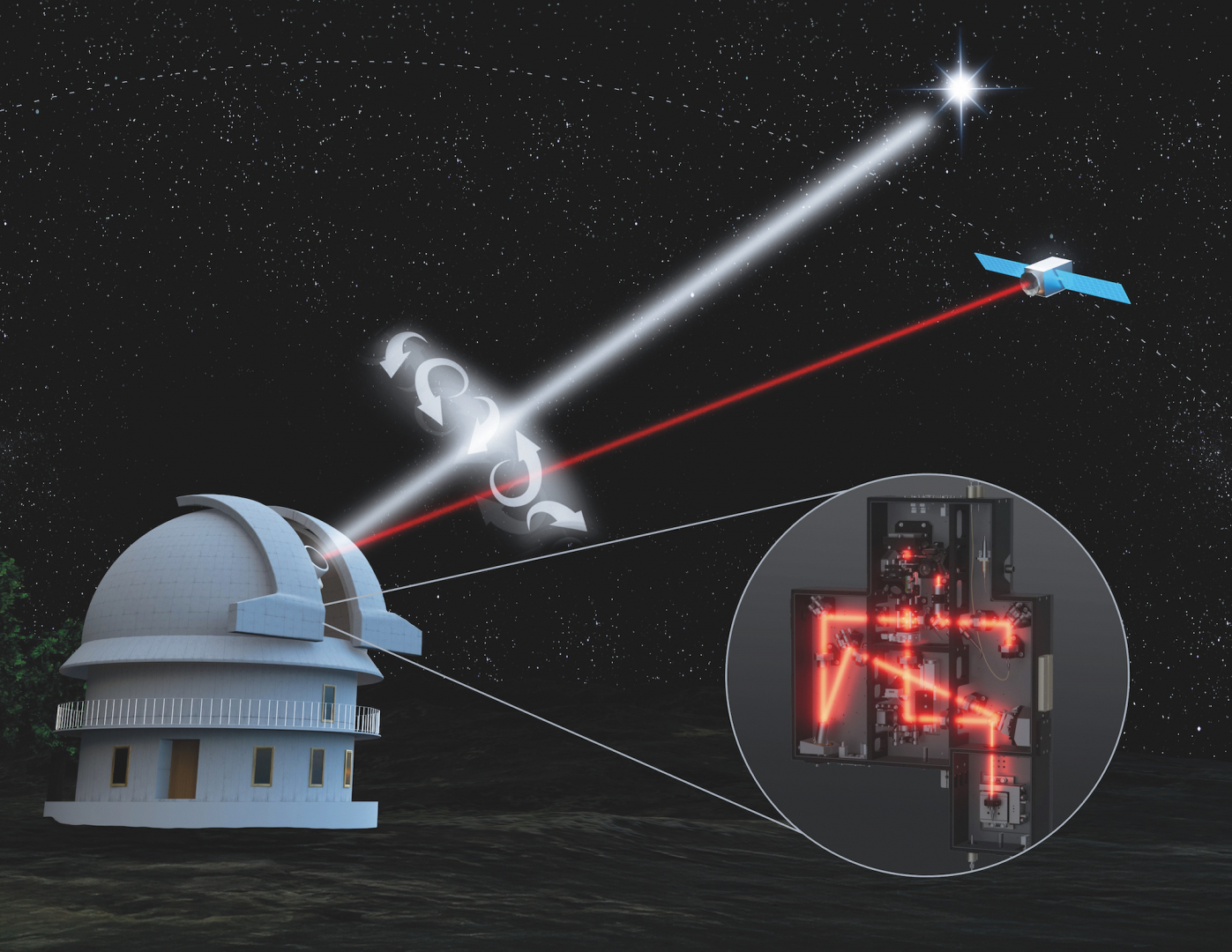The Thuringian State Observatory and the Fraunhofer Institute for Applied Optics and Precision Engineering IOF in Jena are jointly developing a key technology that can be used for astronomical measurements of stars and in modern devices for transmitting encrypted data. The FREEFIB research group is focusing on the development of compact adaptive optics for the efficient feeding of light into a single-mode fiber optic cable.
 Atmospheric turbulence causes wavefront distortions, which are problematic for astronomical observations, for example. A compact module with adaptive optics (enlarged on the right) is designed to help correct the effects of atmospheric turbulence. Illustration: Fraunhofer IOF
Atmospheric turbulence causes wavefront distortions, which are problematic for astronomical observations, for example. A compact module with adaptive optics (enlarged on the right) is designed to help correct the effects of atmospheric turbulence. Illustration: Fraunhofer IOF
The name FREEFIB is a combination of the free beam of light, or “free space,” which is directed into a fiber. The FREEFIB research group works on a solution for coupling a laser beam, which is transmitted through the air via a free beam on an optical line-of-sight connection, back into an optical fiber, specifically a single-mode fiber. The goal is to develop a compact and cost-efficient module for fiber coupling of starlight or laser light for telescopes in the one- to two-meter class.
FREEFIB continues until December 2027. The research is financed by the Free State of Thuringia with funding from the European Social Fund (ESF) Plus.
Learn more about FREEFIB.


